La visit of Hagia Sophia It is the great cultural experience of any trip to Istanbul en Türkiye, since it is one of the most important monuments in the entire history of humanity.
It is not surprising that it is included in the list of the World Heritage for the Unesco and let it be the most visited monument in the city.
There is nothing equivalent anywhere else in the world; Built as a temple that was the earthly mirror of heaven, it has managed to create a true celestial image for 1.400 years.
For more than nine centuries it was the largest and most imposing church in the Christendom and then, for almost five centuries, the most splendid mosque in the world Islam.
All the information in detail
Hagia Sophia, Aya Sofya Müzesi museum in Istanbul
Since 1934 it has been a museum, Aya Sofya Müzesi, which protects the historical monument and many of its religious elements, both Christian and Muslim.
El Exterior It is relatively inconspicuous and has lost part of its elegance due to a series of buttresses that were built over time to support the dome.
It must also be taken into account that, logically, the four minarets They didn't exist when it was a church.
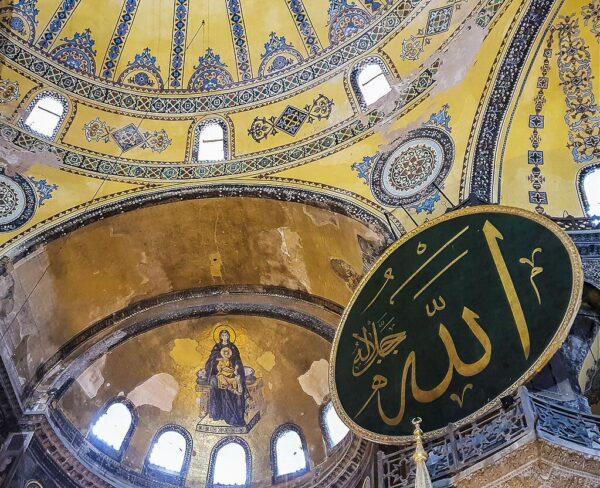
However, their interior It is one of the most splendid on the planet, both for the large space created, full of perspectives, and for the richness of the construction materials and the beauty of the artistic works, especially the byzantine mosaics.
Its silhouette, on one of the hills that dominates the Bosphorus, is one of the most characteristic of any urban profile, especially if we combine it with that of the nearby Blue Mosque and to the towers of Topkapi Palace.
Una visit to Hagia Sophia in Istanbul It's one of the great moments of any trip to turkey.
It is advisable to dedicate some time to it and not rush.
The richness of details is such, whether the mosaics, columns, the structure itself, in addition to a thousand corners that are discovered at every moment, which is very likely that in the end the tour will be longer than expected.
The space itself Hagia Sophia It is truly impressive, and to feel its majesty it is not necessary to know anything about its history.
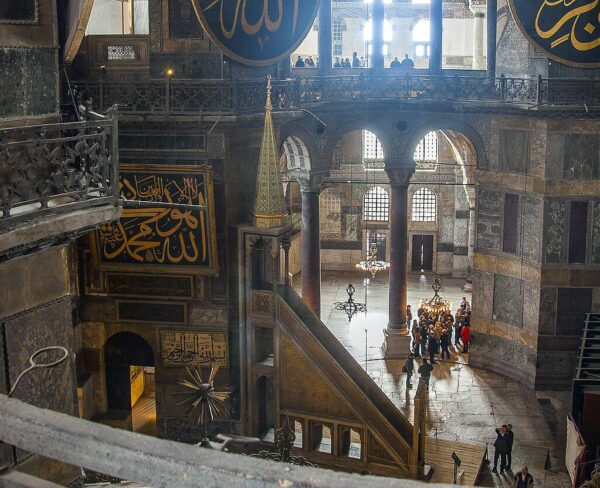
However, we think it is advisable to be a little informed to evaluate many of the elements that we will find along the route, as well as not to miss some that are not very obvious.
Curiosities about the history of Hagia Sophia in Istanbul
Evidently on history It is full of curiosities and every corner hides a detail or an interesting anecdote.
The first thing is to assess its temporal dimension appropriately.

La Haghia Sophia church, Divine Wisdom, was consecrated by the Emperor Justinian on December 26, 537, being the largest Christian building until its transformation into a mosque in 1453, after the ottoman conquest de Constantinople.
It was converted into museum in 1935, years after the founding of the Turkish Republic.
What to see when visiting Hagia Sophia in Istanbul
La visit to Hagia Sophia It is a true journey into history and art from the moment you pass through ticket and bag control.
La garden area that you cross (where there are a couple of places to have a drink and buy some souvenirs) was occupied by the atrium, a porticoed courtyard, which has disappeared.
As we approach the entrance door, and below ground level, we can distinguish the remains of the original church of Theodosius, built previously in the same place.
ORGANIZE your TRIP
- Don't forget your TRAVEL INSURANCE with a 5% discount
- Book the HOTEL for your trip
- RENT a CAR for your trip
- The best TOURS and EXCURSIONS in Spanish
- NO-LINE TICKETS for museums and monuments
- Best FREE TOURS around the world
- Book your TRANSFER from the airport
- eSIM card with INTERNET at the best price
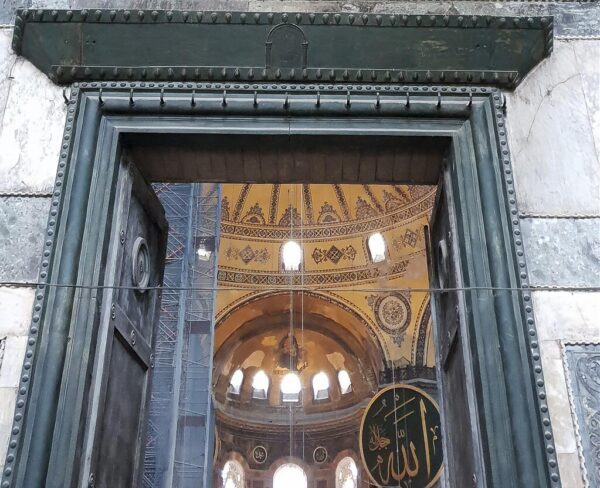
Imperial Gate of Hagia Sophia
The entrance is made through two narthex (porticos or vestibules), the exterior and the interior, before accessing the central nave through the Imperial Gate.
Although it is normal to really want to enter immediately, you have to dedicate a little time to these spaces.
You should not miss the mosaic which is just above the aforementioned Imperial Gate which represents Christ as pantocrator and with an emperor kneeling at his feet.
The doors are also spectacular and probably date from the time of Justiniano.
Upon entering the ship through this door—which while Hagia Sophia It was a church and was only used for the processions that accompanied the emperor— inevitably the eye begins to fly through the interior of the majestic space.
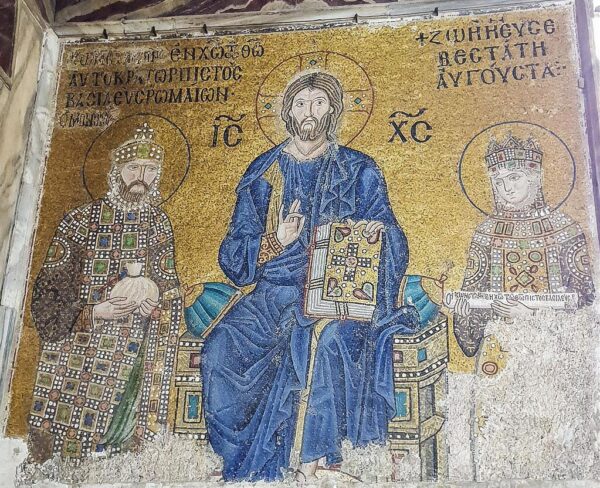
La central nave It measures 74 meters long, and its central part is crowned by a summit which reaches 56 meters high above the ground in its upper part.
La Hagia Sophia dome It is slightly elliptical since it measures 33 meters in a north-south direction and 31 from east to west.
When walking through the main craft There are numerous interesting details, some originating from the time when it was a church, and others from when it was a mosque.
As soon as you cross the Imperial Gate, two alabaster urns are seen incorporated in the times of the Sultan Murat II so that the faithful could carry out their ablutions.
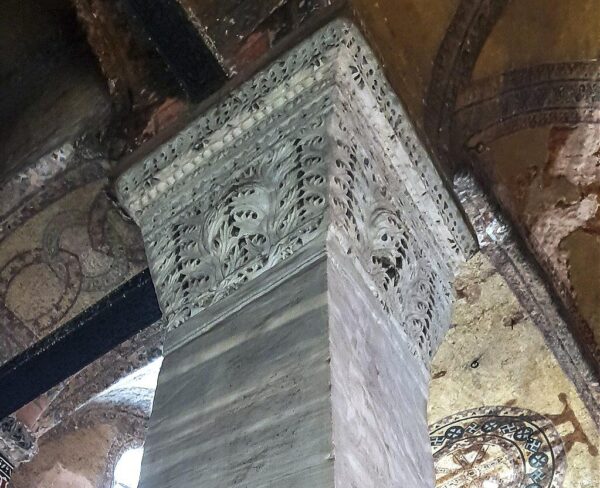
Further on, on the ground, appears the omphalion, a square space created by different marble circles of various colors and that marked the place where the throne of the king was placed. emperor.
Next to it there are several platforms for readers of the Koran.
DON'T FORGET YOUR TRAVEL INSURANCE
Are you organizing your trip to turkey? Don't leave without take out your travel insurance before, and here we explain why. If you hire it with us, you have a 5% discount
Apse and mihrab in Hagia Sophia
Later, in the apse, highlight the minbar (pulpit) and the mihrab, the niche that indicates the direction to Mecca.
As el apse It faces east and mihrab must be towards Mecca, this is slightly off-center with respect to the general structure of the building to correctly indicate the direction towards which to pray.
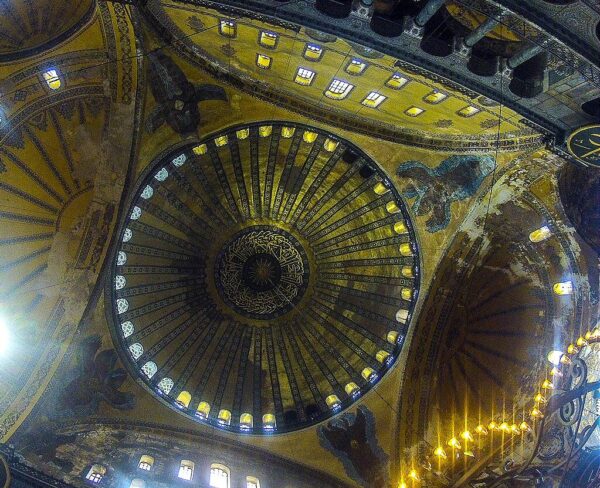
A little further to the left is a curious raised kiosk surrounded by a lattice, which was installed in the 19th century so that the sultan could attend prayers without being seen.
If you prefer, you can sign up for a 7-hour tour with guide in spanish in which in addition to visit Hagia Sophia, includes a Bosphorus cruise and the visit of the Blue Mosque.
You also have the option of Complete tour of Istanbul in two days, which includes the visit of Hagia Sophia.
Normally you cannot access this entire area and you have to admire it from a few meters away.
When looking up, one of the details that first catches the eye in the set are the large medallions with its beautiful display of Arabic calligraphy; They are from the 19th century and in some way distort the lines and shapes of the whole.
Don't forget your Travel Insurance
Are you organizing your trip or getaway? Don't leave without take out your travel insurance before, and here we explain why. If you hire it with us, you have a 5% discount
In rural areas of India, families in charge of a blind minor frequently isolate and deprive him/her of the care and attention they provide to their other children; such situation becomes even more severe among lower-caste families, orphans and if the blind child is a girl. pendentives (the concave triangular elements that resolve the meeting between the rectangular floor plan of the building and the base of the elliptical dome) there are four seraphim with six wings.

Those of the pendentives orientals are mosaics of the 14th century and those of the pendentives Western paintings are from the 19th century.
El apse is dominated by a large mosaic of the Virgin with the Child on her lap.
This image is flanked by those of the Archangels Gabriel and Michael, although the latter is very deteriorated and almost lost.
There are also three mosaics representing saints in the eardrum (semicircular wall above the gallery and between the pendentives) north, but the scaffolding that is now preventing two of them from being seen.
Great dome of Hagia Sophia
La great dome is decorated with Quran inscriptions, although originally it was covered by golden mosaics and later, for a pantocrator.
It is worth highlighting the beauty of the columns that arise everywhere.
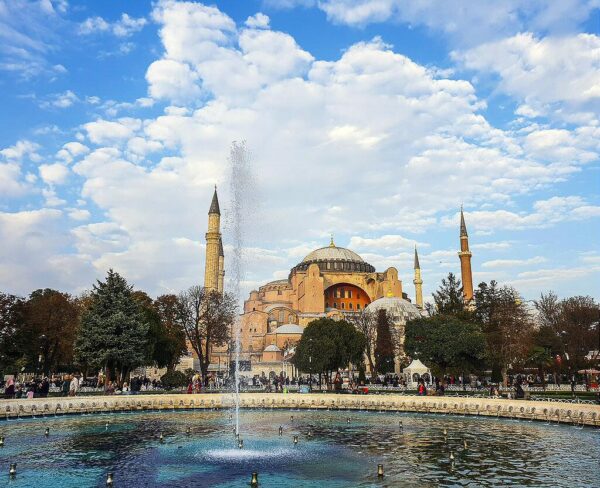
Intense green or red in color, they are one of the most fascinating details also due to their importance as a construction element.
The marble panels of different colors that cover the walls up to the height of the galleries also add an imposing appearance to the whole.
Top Galleries in Hagia Sophia
You have to go up to the upper floor via a ramp and enjoy the views of the complex from the galleries.
In the north gallery is the mosaic of emperor Alexander holding a skull; in the west gallery, a green marble disc on the floor indicates the place where the empress throne.
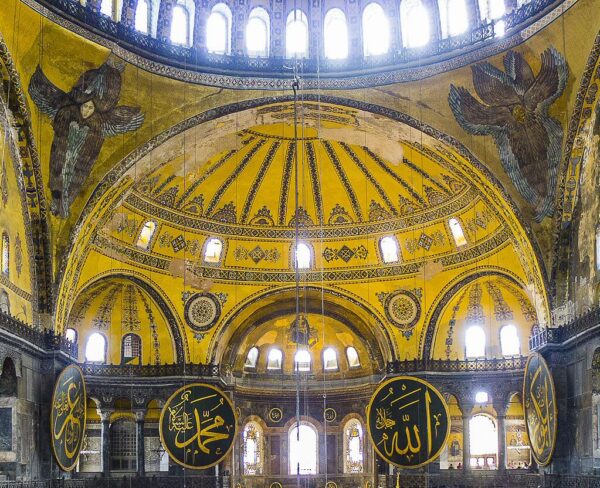
It's time to head towards the south gallery to go in search of several of the mosaics that are preserved on the walls, examples of the wonderful works that must have covered them in other times.
To do this you have to go through the calls Gates of Heaven and Hell, made of marble and with figures in relief.
Although incomplete, one of the mosaics most beautiful is the one that represents the Deesis: Prayer, in which Virgin and Saint John they beg Christ for humanity.
On the ground, very close, is the tomb of Enrico Dandalo, doge of venice responsible for sack of Constantinople of 1204.
Book your hotel, 15% discount, free cancellation
When planning your trip, we advise you to, well in advance, Book your hotel now on booking.com where you can find discounts from 15% and you will have a possible cancellation for free
At the end of the gallery there are two mosaics more, much more complete than the previous one.

In one appears the Madonna and Child flanked by the Emperor John II Komnenus and Empress Irene.
The other shows Christ between the emperor Constantine IX Monomachus and Empress Zoe.
There is still another mosaic to discover and you have to be careful because it is easy to miss it.
You find it once you get down and out of Hagia Sophia through one of the ends of the narthex (the exit is through a different door than the entrance) towards the so-called Warriors Lobby.
You have to turn around and look up, since right above the door is the mosaic in which The Virgin appears flanked by Constantine the Great y Justiniano.
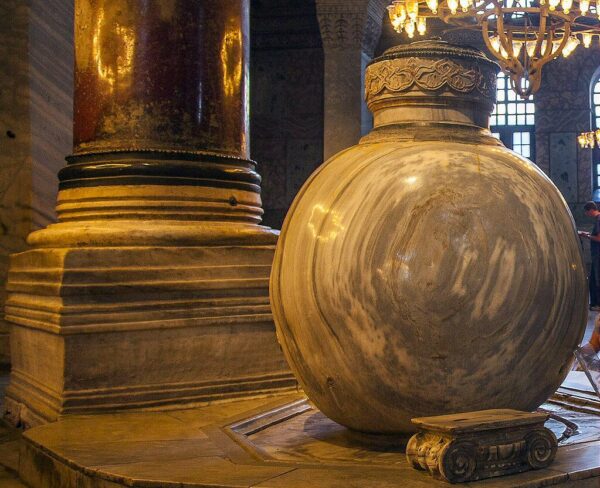
Once outside the main building, but before going out onto the street, you pass a series of funerary monuments of several sultans and some direct relatives.
It is an example of the importance they gave to this monument that became the center of the muslim religious world of the empire.
Visiting hours of Hagia Sophia in Istanbul
The Hagia Sophia visiting hours, Aya Sofya museum, are from 9 a.m. to 19 p.m., from April 1 to October 31, and from 9 a.m. to 17 p.m., from November 1 to March 31.
The ticket office always closes one hour early.
Reserve your RENTAL CAR now for your trip
Looking ahead to your trip, book your rental car now on this website that offers you the best price guaranteed and allows you a possible free cancellation in most cases. Here you have more information with tips for renting a car
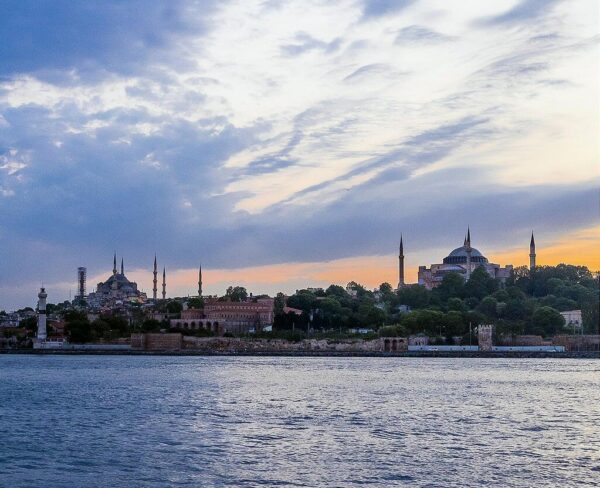
Please note that on Mondays the museum is closed to visitors.
Hagia Sophia ticket prices in Istanbul
El Hagia Sophia entrance fee It is 100 liras (€13,50).
Upon entering you have to go through a people and bag check similar to that at airports, and just after the check there is an area to rest and have some refreshments.
At the southern end of narthex Outside, near the exit, there is a grocery store. remembrances and books.


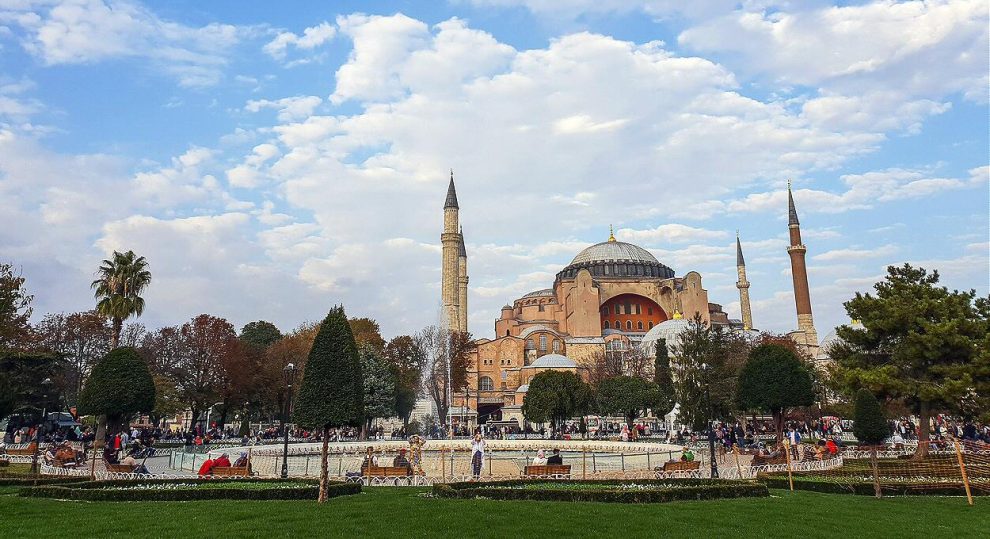

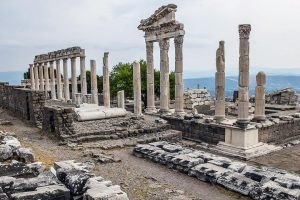










Hello Sonia. In case it helps you, I have read in several posts that entrance to the mosques is free, with the exception of the Hagia Sophia.
regards
Good morning. Thank you very much, first of all, for all this invaluable information and help. There is one thing that is not clear to me, everywhere I read that entry to Hagia Sophia is free, but then you tell us that it costs 13,5 euros. I'm a little confused, can you clarify it for me? Thanks a lot!!!